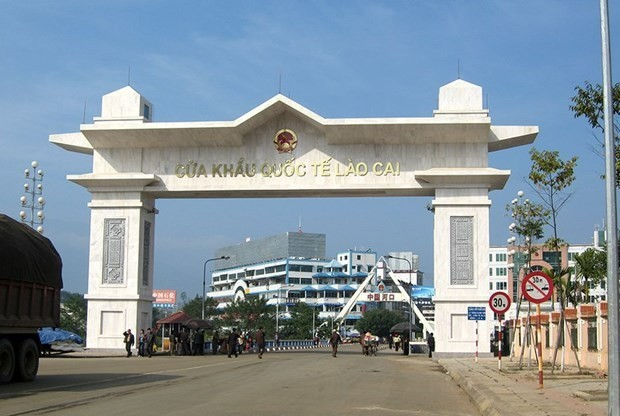 Economy
Economy


|
| Lào Cai International Border Gate — VNA/VNS Photo |
HÀ NỘI — In its article titled 'Cross-border trade driving China-Việt Nam ties', the China Daily wrote that at dawn, Vietnamese tourists lined up at Hekou Port, the largest land port along the Yunnan section of the China-Việt Nam border, drawn by more than mere sightseeing. These vibrant exchanges of goods and people are a microcosm of the ties between China and Việt Nam, which have been continuously deepened by the engines of shopping, trade and tourism.
According to the article, this bustling scene is driven by Việt Nam's cross-border shopping boom, propelling a wave of Chinese goods southward. This shopping frenzy is reshaping the border economy as foreign consumers increasingly flock to Chinese e-commerce platforms for Made in China products.
This offline frenzy is mirrored at the China-ASEAN (Hekou) Cross-border E-logistics Industrial Park, where over 30 livestream studios buzz with Chinese and Vietnamese sales pitches. Many Vietnamese streamers visit Chinese factories, where they showcase products live to their audiences back home. These Made-in-China goods are shipped from bonded warehouses in China and can reach Việt Nam within a week.
While consumer goods flow south, Vietnamese agricultural produce heads north. Trucks constantly shuttle at Hekou, laden with Yunnan vegetables, flowers and fruit, alongside Vietnamese dragon fruit, coffee, cassava – and now, passion fruit and lychee. Việt Nam's lychee season sees over 100 trucks cross daily into China via Hekou – each clearing Customs in under 10 minutes on average.
Customs statistics show that in the first half of this year, Hekou Customs processed 29,000 metric tonnes of imported Vietnamese lychees worth 160 million yuan (US$22.4 million), representing year-on-year increases of 104.7 per cent in volume and 66.9 per cent in value, respectively.
Hekou Customs data highlighted the growing trade, with more than 200,000 tonnes of Vietnamese fruit worth 700 million yuan entering China in the first four months of 2025.
'China-Việt Nam agricultural cooperation is highly complementary, with vast potential and tangible results,' said Ma Zhigang, an official with China's Ministry of Agriculture and Rural Affairs.
In 2024, trade between Yunnan and Việt Nam reached 22.1 billion yuan, up 18.6 per cent year-on-year. Yunnan's specialty agricultural products and machinery find robust markets in Việt Nam, while Vietnamese tropical fruit and seafood delight Yunnan consumers.
Cooperation has deepened as Yunnan recently exported its first batch of 8-tonne freshwater-farmed live sturgeon to Việt Nam. In Yunnan's Malipo Border Economic Cooperation Zone, near the border, Vietnamese durian, coffee beans and other raw materials are processed into high-value, freeze-dried snacks and essential oils for broader markets.
Beyond goods, people-to-people exchanges binds the nations. In 2025, more than 10,600 Vietnamese tour groups – totaling over 120,000 visitors – entered China via Hekou Port, according to official data.
This grassroots synergy – powered by digital platforms, complementary industries and cultural affinity – has fueled a robust partnership between the two countries. China has remained Việt Nam's largest trading partner for over two decades, while Việt Nam is China's top trading partner within ASEAN. Bilateral trade exceeded $260 billion in 2024. — VNS




